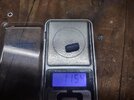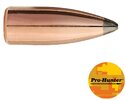Copy pasta from a Reddit
https://www.reddit.com/r/guns/comments/2jc8nt
"Everyone knows that putting spitzer bullets into a tubular magazine is just asking for missing fingers, right? Wrong. As the linked article demonstrates, the likelihood of a detonation in a tubular magazine due to a bullet striking a primer under recoil is extremely low. Additionally, even if a detonation were to occur, the worst that would happen would be a bit of noise and smoke. No one is losing any fingers.
During the first half of the experiment, Ballou was unable to produce a detonation with flat point or rounded bullets, but was in fact able to detonate a primer using a spitzer bullet. However, it should also be noted that this was under "beyond-worst-case" (Ballou, 2001, p. 73) conditions. A 2 pound ball peen hammer generates far more force than a cartridge will experience under recoil in a magazine tube. Bear in mind that even under these conditions, it took the author 5 attempts to set off the primer due to the lead of the soft point absorbing the blow. Ballou states that he did not attempt the experiment with a FMJ bullet, asserting that "The results with the jacketed spitzer bullet indicate that a pointed FMJ bullet would have probably fired the primer on the first whack" (Ballou, 2001, p. 73).
What can we gather from this portion of his experiment? Pointed FMJ bullets may be a bad idea (more on the "may" part of that later) but primer detonations are extremely unlikely with any other bullet design, including spitzer soft points.
During the second half of the experiment, Ballou discovers something that makes the above detonations even
more unlikely. This is the fact that the preceding bullet is not fully resting on the primer of the cartridge in front of it, if even at all. Ballou (2001) states that "This makes sense, as virtually all cartridges used in the tubular magazine are tapered to a certain extent or have a pronounced rim, or both, causing them to generally lay at the slight angle when loaded in the magazine" (p. 74). He further states that "In the case of flat-point bullets that have a
meplat (nose) that's almost as large in diameter as the primer, probably the bullet's nose will be largely supported by the case itself. This fact alone adds greatly to the safety of the tubular magazine concept" (Ballou, 2001, p. 74). The above observations, in my opinion, also contribute to the safety of pointed FMJ bullets in a magazine tube, hence my statement earlier that they
may be a bad idea. I am not ambitious enough to attempt the author's experiment for myself and find out, so we will have to guess.
The main point of the second half of Ballou's experiment was to demonstrate that even in the extremely unlikely case of a detonation, not only is there not going to be a chain reaction that sets off every cartridge in the tube, but there is not any danger to the shooter should a single cartridge detonate. When he forces a detonation, he describes the results thusly:
First, there was a report about equal in loudness to a child's
cap gun, followed by a small amount of smoke drifting out
from under the bucket. Waiting a few minutes, I carefully
removed the magazine's end plug and slid the contents out.
Two cartridges, sooty on the outside and with their bullets
telescoped back part way into the cases, were followed by
the virtually undamaged bullet of the first cartridge, a lot of
unburned powder, and finally the cartridge's case, ruptured
for about half of its length. The device, however, was fully
intact and undamaged. (Ballou, 2001, p. 74)
What can we conclude from the second half of Ballou's experiment? Mostly that in the unlikely event of a magazine detonation, "the real danger to the shooter would be from escaping gas" (Ballou, 2001, p. 75) which is just another reason to always wear eye protection while shooting.
In conclusion, I think that this article (which I had to buy in order to read by the way) puts to rest any worry on tubular magazine detonations. The risk of detonation, even with pointed bullets, is very minimal, and should a detonation occur against all odds, no one is going to be losing any fingers. A recoil impulse simply does not generate enough force to set off a primer, and a cartridge detonation in a loose "chamber" is not very dangerous. Whether or not pointed bullets in a cartridge such as .30-30 that is only useful out to a few hundred yards are even worth using is a debate for another day, but should someone choose to load them no one is going to be making a trip to the hospital."
Discover the magic of the internet at Imgur, a community powered entertainment destination. Lift your spirits with funny jokes, trending memes, entertaining gifs, inspiring stories, viral videos, and so much more from users like zaptal47.

imgur.com







